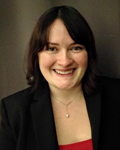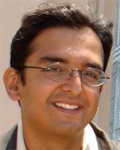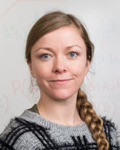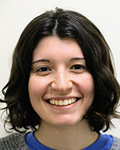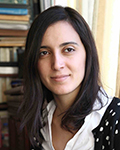This event took place on June 26, 2019 and is no longer available on-demand.
Read session recaps and continue the discussion in the Neuronline Community.
Machine learning methods enable researchers to discover statistical patterns in large datasets to solve a wide variety of tasks, including in neuroscience. Recent advances have led to an explosion in the scope and complexity of problems to which machine learning can be applied, with an accuracy rivaling or surpassing that of humans in some domains.
This virtual conference will illuminate the many ways machine learning and neuroscience intersect in the context of data analysis and modeling brain function, and how neuroscience can benefit from the machine learning revolution.
Topics include:
- Basic machine learning concepts and resources.
- Machine learning methods to automate analyses of large neuroscience datasets.
- Using deep network learning to gain insight into how the brain learns.
- Combining machine learning concepts with neuroscience theory to predict nervous system function and uncover general principles.
The conference will end with speakers sharing their views on promising future directions for both machine learning and neuroscience.
Watch short videos from neuroscientists in the field as they describe important methods, concepts, and data from their lab. The videos are available on Neuronline.
Contact us if you have questions. Email digitallearning@sfn.org or call (202) 962-4000.
Click on each session title to reveal its description or download a one-page version of the agenda here.
Session 1: The Fundamentals of Machine Learning
Speakers: Floh Thiels, Sanjoy Dasgupta
Time: 11:00 a.m. – 11:45 a.m. EDT
The field of machine learning encompasses a broad range of data modeling and predictive tasks, and for each of these, a variety of approaches has been developed to address different application characteristics (e.g., different types of data). This session will provide a taxonomy of machine learning tasks and algorithms, illustrated by scientific applications.
Session 2: Machine Learning for Automating Analysis of Big Neuroscience Data
Speakers: Kristin Branson, Sebastian Seung, Leila Wehbe, Nicholas Turner
Time: 12:00 p.m. – 1:00 p.m. EDT
Across neuroscience, from fMRI brain imaging of cognitive processing in humans to electron microscopy dissection of neuron connectivity in mice, scientists are producing datasets of unprecedented scale and complexity. Machine learning is a powerful tool for automating the processing and analysis of these datasets. In this session, Sebastian Seung and Leila Wehbe will discuss how machine learning is being used to analyze these types of data, and as a source of proposed models for the brain processes involved in the tasks behind the experiments. They will discuss different machine learning approaches and highlight pitfalls to avoid while pursuing them.
Session 3: Machine Learning for Modeling the Brain
Speakers: Andrew Saxe, Kim Stachenfeld
Time: 1:30 p.m. – 2:30 p.m. EDT
In addition to providing state-of-the-art tools for neural data analysis, machine learning methods can be useful to neuroscience as models of neural systems themselves. This session will focus on how machine learning principles provide an orienting normative perspective for making sense of brain data. Andrew Saxe and Kim Stachenfeld will show how understanding properties of learning in an artificial context can translate to insights about learning in the biological context, and discuss how machine learning problems and unexplained neuroscience data can mutually inform each other. Their talks will be augmented with examples from their work highlighting ML-neuro translational insights.
Session 4: Machine Learning for Discovering Structure in Data
Speakers: Floh Thiels, Scott Linderman, Srini Turaga
Time: 2:45 p.m. – 3:45 p.m. EDT
Unsupervised machine learning methods combine our prior hypotheses about the world with big data sets to discover new hypotheses. This session will describe the frontier of unsupervised machine learning algorithms and how they are being used to understand neuroscience data. Scott Linderman will present a short tutorial, “Finding Structure in Neural Data: From HMMs to Deep State Space Models,” which will cover both past and new ideas in state space modeling of neural data. Srini Turaga will present the use of variational autoencoders for Bayesian inference of spikes, synaptic inputs, and connectivity from calcium imaging and optogenetic perturbation experiments.
Session 5: Panel Discussion for Future Directions of Machine Learning in Neuroscience
Speakers: Kristin Branson, Andrew Saxe, Kim Stachenfeld, Leila Wehbe
Time: 4:00 p.m. – 5:00 p.m. EDT
Panelists will share their views on the future of machine learning in neuroscience and answer questions from attendees.
On-Demand Data Blitz Sessions
This virtual conference will include short data blitz videos accessible to attendees. These videos feature neuroscientists describing their research applying computer vision to neuroscience problems. The videos are available on demand, so you can watch them throughout the live day or after the conference.
Data blitz videos will be provided by:
- Beth Cimini, The Broad Institute
- Eyrún Eyjólfsdóttir, Vicarious
- Larissa Heinrich, HHMI Janelia Research Campus
- Talmo Pereira, Princeton University

